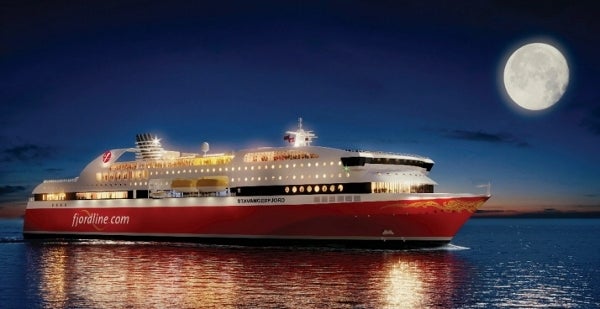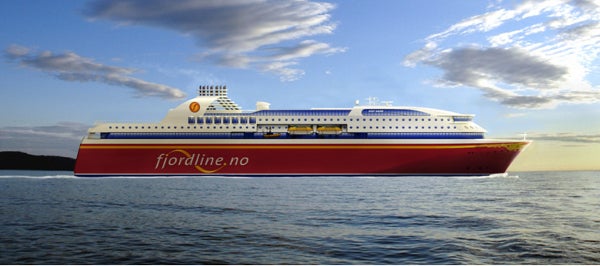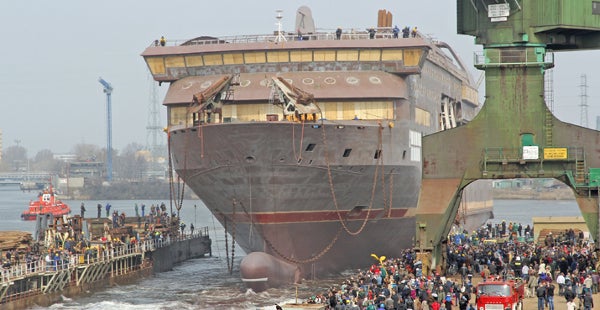Fjord Line’s MS Stavangerfjord, the first of the two new cruise ferries ordered to Bergen Group, was commissioned in June 2013.
Construction works on MS Stavangerfjord began in October 2010. The vessel completed its maiden voyage in July 2013. The second cruise ferry, MS Bergensfjord, was delivered in February 2014.
The new vessels allow Fjord Line to offer regular daily departures from all ports on the routes between Bergen, Stavanger and Hirtshals, as well as between Hirtshals and Langesund.
MS Stavangerfjord is the first cruise ferry to operate on engines fuelled solely by liquefied natural gas (LNG).
The contract for the construction of the ferry was awarded to Bergen Group, while the contract to supply the engines was awarded to Rolls Royce.
Rolls Royce also supplied two 296m³ LNG tanks with an ACON-Gas control system for the MS Stavangerfjord.
MS Stavangerfjord complies with the International Maritime Organisation (IMO) Tier III environmental legislation to reduce sulphur content in fuels, which came into force in 2016.
Construction of MS Stavangerfjord cruise ferry
MS Stavangerfjord was launched in April 2012. Interior fitting and finishing works of the vessel were carried out involving a workforce of around 900.
The construction of the hull for the vessel involved the moulding of 7,000t of steel. The hull was built at Stocznia Gdansk shipyard in Poland, and the interior fitting and finishing works were carried out at the Rissa shipyard in Norway.
Design, accommodation and facilities of Fjord Line’s cruise vessel
MS Stavangerfjord measures 170m in length and 27.5m in width with a draught of 6.35m. The vessel has a gross tonnage capacity of 25,000t and deadweight of 4,000t.
The vessel is capable of accommodating 1,500 passengers in 306 cabins, comprising both standard cabins and luxury suites.
The vessel is also capable of carrying 600 vehicles in the roll-on-roll-off cargo bay and accommodates between 70 and 100 crew members. The vessel is designed to cater to passengers of all ages.
MS Stavangerfjord has ten decks featuring seven restaurants and four bars, six conference rooms, two playrooms, a tax-free shop and a casino.
The luxury cabins aboard the vessel range in sizes from 11m² to 19m², while the standard cabin measures 8m². The luxury cabins are equipped with two beds each, a TV, a minibar, and a bathroom with shower and toilet, while the standard cabins do not feature the minibar. The cabins aboard the vessel are located on the eighth and ninth decks.
LNG-powered engines
MS Stavangerfjord is equipped with four BV12PG gas engines of 5.6MW each featuring a highly efficient Promas integrated rudder and propulsion system with 30,000hp propeller turbines.
The diesel auxiliary engines fitted into the vessel are equipped with powerful catalytic converters.
The LNG-fuelled engines reduce nitrogen oxide emissions by 90%, and contain no sulphur or heavy metals.
The technology aboard the vessel reduces overall carbon dioxide emissions by 23%.
The propulsion system integrated into the MS Stavangerfjord enables it to cruise at an operating speed of 21.5kt.
Contractors involved with the MS Stavangerfjord cruise ferry
Bergen Group Ship Design and Bergen Group Fosen were entrusted to provide the design for the vessel. Finn Falkum Hansen was appointed as the architect for the project.
The contract to supply the 300,000t of LNG needed per year to fuel the engines has been awarded to Skangass.
Deliveries of tax-free goods onboard the cruise ferry are overseen by Gebr. Heinemann. The contract awarded to Gebr. Heinemann includes retailing of perfume, cosmetics, clothing, alcohol, tobacco, delicacies and other commodities.






